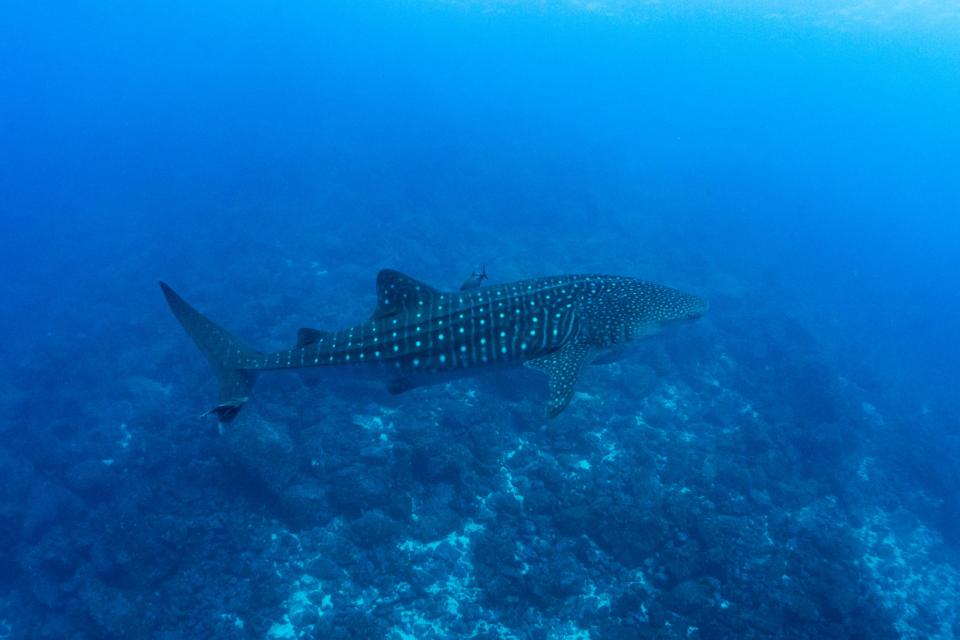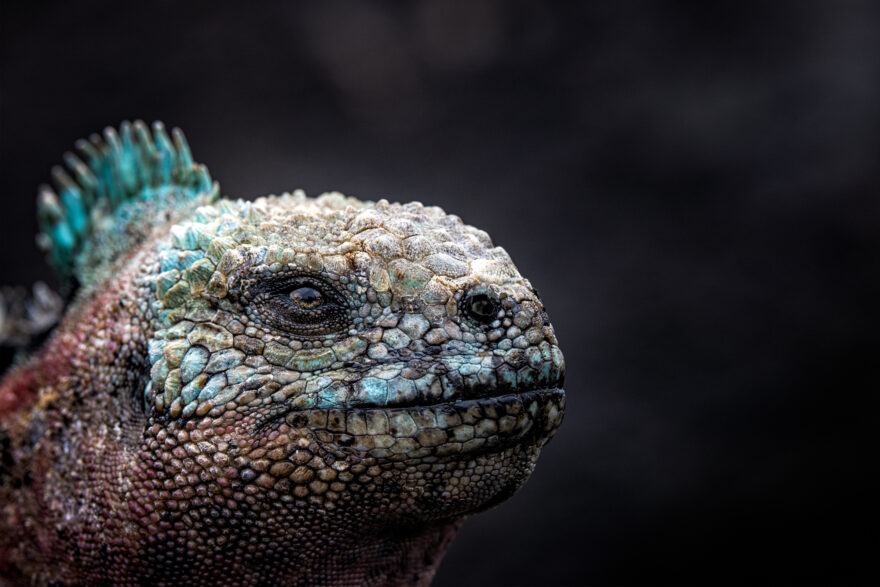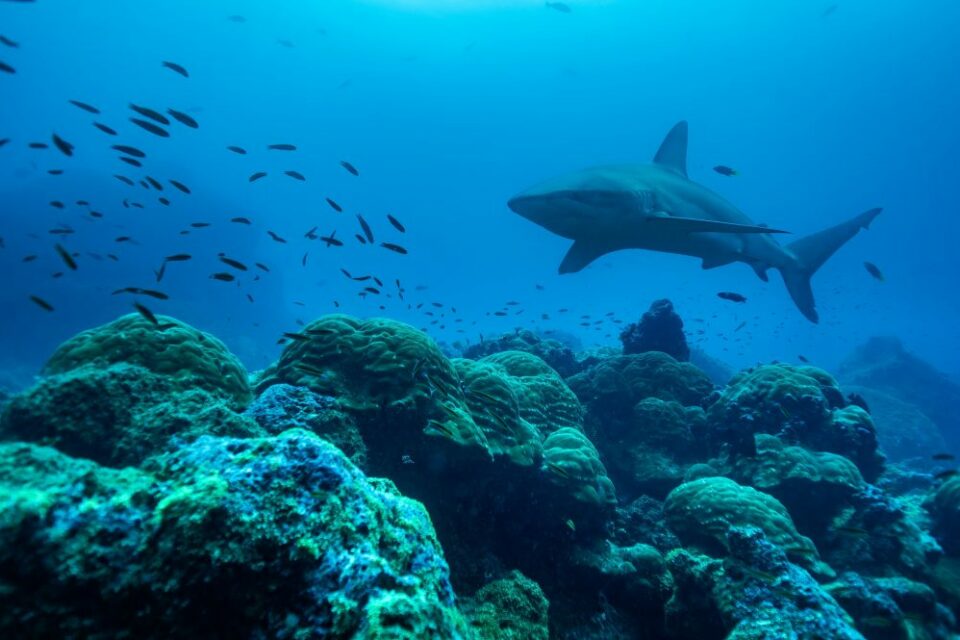

International industrial fishing fleets and expansion of Ecuador’s protected areas – a summary
Since being reported in the news in July 2020, the international, industrial fishing fleet on the edge of the Galapagos Marine Reserve (GMR) has received global attention. Galapagos Conservation Trust (GCT) is following the situation closely as this fishing fleet has the possibility to devastate the GMR’s unique marine biodiversity.
Introduction
Since being reported in the news in July 2020, the international, industrial fishing fleet on the edge of the Galapagos Marine Reserve (GMR) has received global attention. In particular, there has been a large presence south-east of the GMR, along the edge of the Ecuadorian Exclusive Economic Zone (EEZ). This is not new – they are there every year – but this year the fleet is said to be one of the largest ever seen. Galapagos Conservation Trust (GCT) is following the situation closely as this fishing fleet has the possibility to devastate the GMR’s unique marine biodiversity.
Here are the facts as we understand them so far:
- South-east of the GMR: There were thought to be around 300 vessels operating to the south-east of the GMR, consisting of fishing, refrigerated container and refuelling ships. There is a lot of conflicting information regarding the composition, intended target species and the legality of the action of the fleet but what is clear is that the combination of these vessels enables the fishing fleet to continue operating on their target fishing ground indefinitely.
- The Automatic Identification System (AIS) data appears to show that the fleet was in international waters and targeting squid. They appeared to be flagged to various countries including China and Panama.
- There are local reports of an increased amount of plastic pollution of Asian origin, thought to have come from these vessels.
- Although the fishing fleet is not currently breaking international laws, the Ecuadorian Government as well as many other nation-states are concerned about the number of fish and other marine species that could be impacted by the fleet.
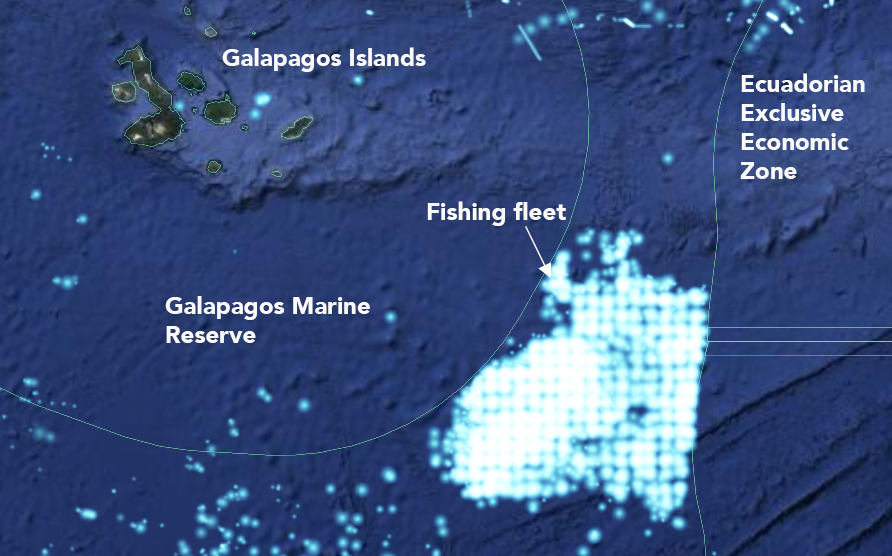
Satellite image of the international fishing fleet in June 2020 © Global Fishing Watch
- North-west of the GMR: A separate fishing fleet is operating in the high seas north-west of Galapagos – this fleet is thought to be long-line fishing. Long-lining is indiscriminate about which species it catches, including endangered species such as sharks and turtles. It is near this fishing fleet that the tag of one of the whale sharks monitored by the Galapagos Whale Shark Project, named Hope, stopped transmitting.
- Tagged in September 2019, her track transmitted for over eight months and was indicating a loop that made the team think she could be the first whale shark ever to be tracked leaving and returning to Galapagos. It recorded over 7,000km of data.
- Hope is the third whale shark to have gone missing in the same area over the last decade, leading to suspicions that she may have been caught by the fishing fleet.
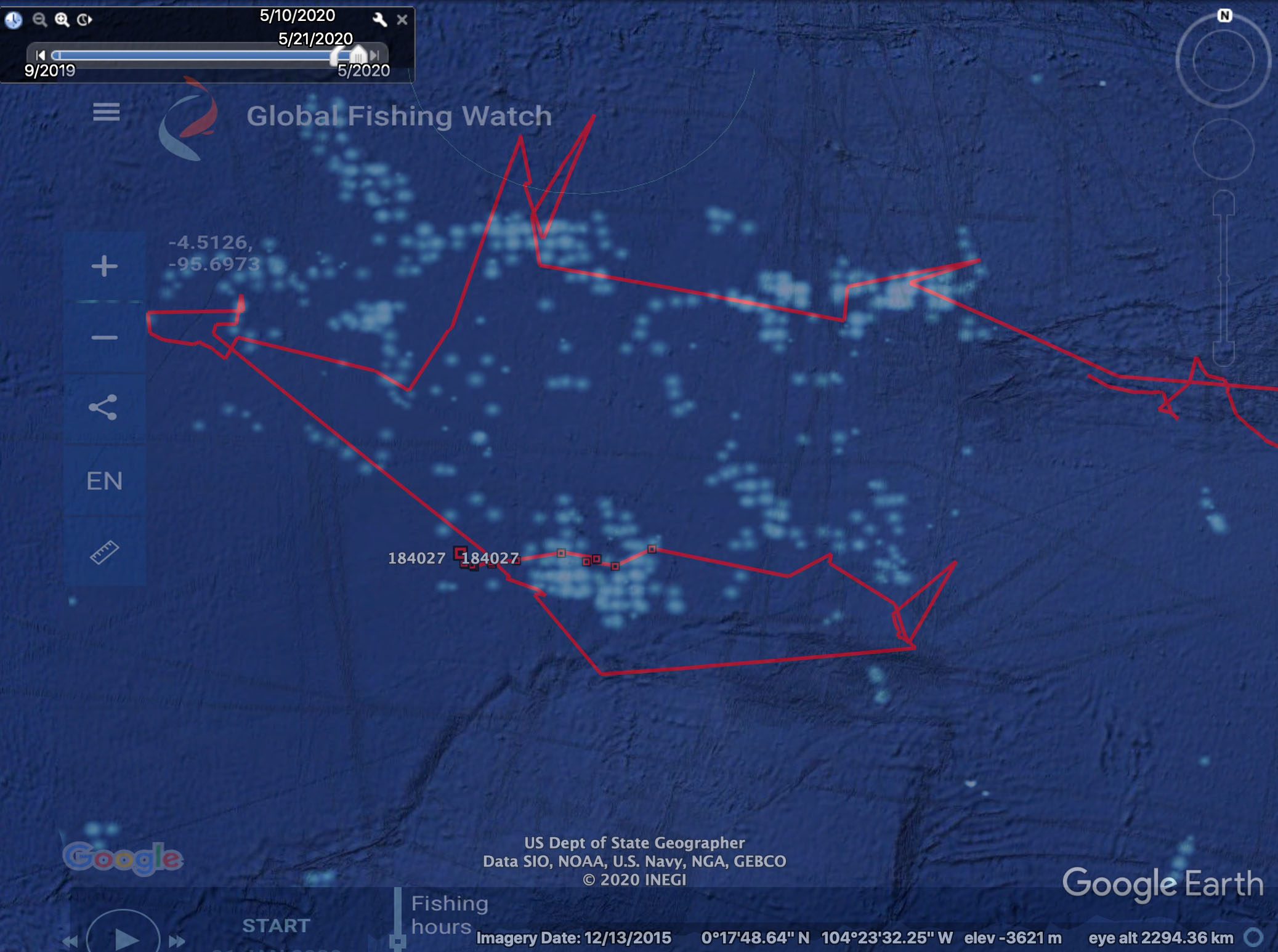
Hope’s track (red line) and fishing vessels (white dots) © GWSP/Global Fishing Watch
Actions being taken
Since July 2020, Ecuador has been working on an ‘ocean protection plan’ for the Galapagos Marine Reserve (GMR). As part of this the government have been looking into a proposal to create a new protected area that would adjoin the GMR – though this is being opposed by the fishing sector. We do not know yet what this proposal would look like, including which areas would be no-take zones and sustainable fishing zones.
In addition to action by the Ecuadorian government, the Chinese government has now implemented a moratorium on all activities in the stretch of water between the Ecuadorian EEZ and the GMR between September and November. This is the first time that they have enforced such measures on their ‘far distance fishing fleet’ operating in international waters. They have also accepted that their fleet can be supervised by Ecuadorian authorities whilst in these waters. As China prepares to host the next UN Biodiversity Conference in 2021, there are hopes that it will continue to work to improve its international fishing policies. However, it is important to note that other countries will still be able to fish in these areas when the Chinese vessels are not there.
Galapagos Conservation Trust activities
This news is important for activities being undertaken by Galapagos Conservation Trust in both our shark and our plastic programmes.
As part of our Endangered Sharks of Galapagos programme, we have been supporting the creation of a protected swimway between Galapagos and Cocos Island in Costa Rica since 2018, helping our partners to gather the evidence needed by the Ecuadorian and Costa Rican governments to make this a reality. We understand that this is being considered by the Ecuadorian government as an initial proposed protected area as the evidence collected so far is compelling.
As part of our Plastic Pollution Free Galapagos programme, we have supported beach surveys in the Galapagos Archipelago. Evidence from these shows that a large proportion of the marine plastic pollution found in the Islands is of Asian origin, mainly Chinese. Oceanographic models produced by our partner Erik van Sebille show that this cannot have arrived from Asia directly. Therefore, it is suspected that the origin must be the international fishing fleets to the south and east of the GMR. With increasing political pressure, there is now an opportunity to address the waste management practices of these ships, thereby removing one of the key sources of plastic pollution in Galapagos.
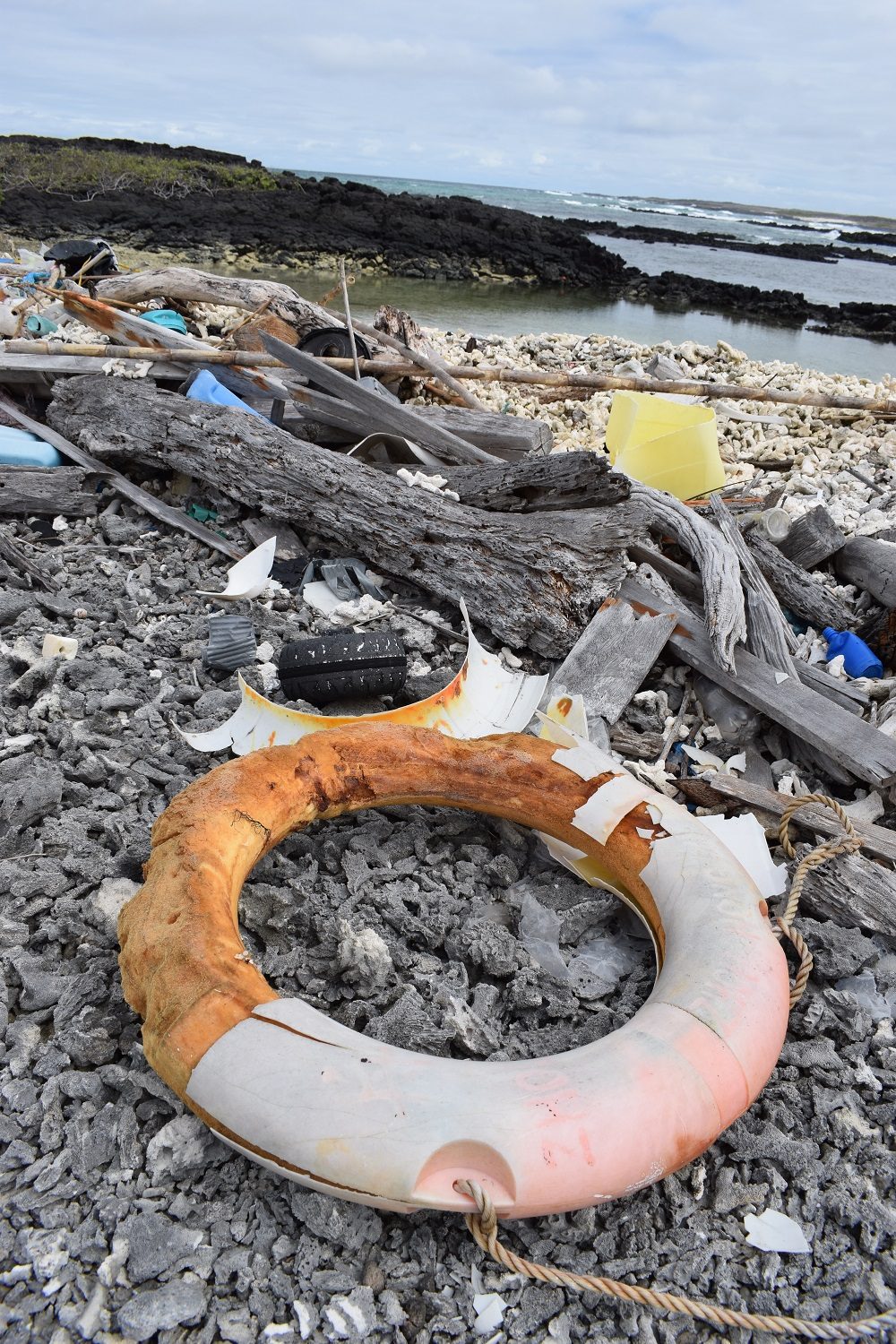
Plastic pollution on a Galapagos beach © GCT
For the latest news on this story, please follow our social media accounts – Facebook, Twitter, Instagram.
Related articles

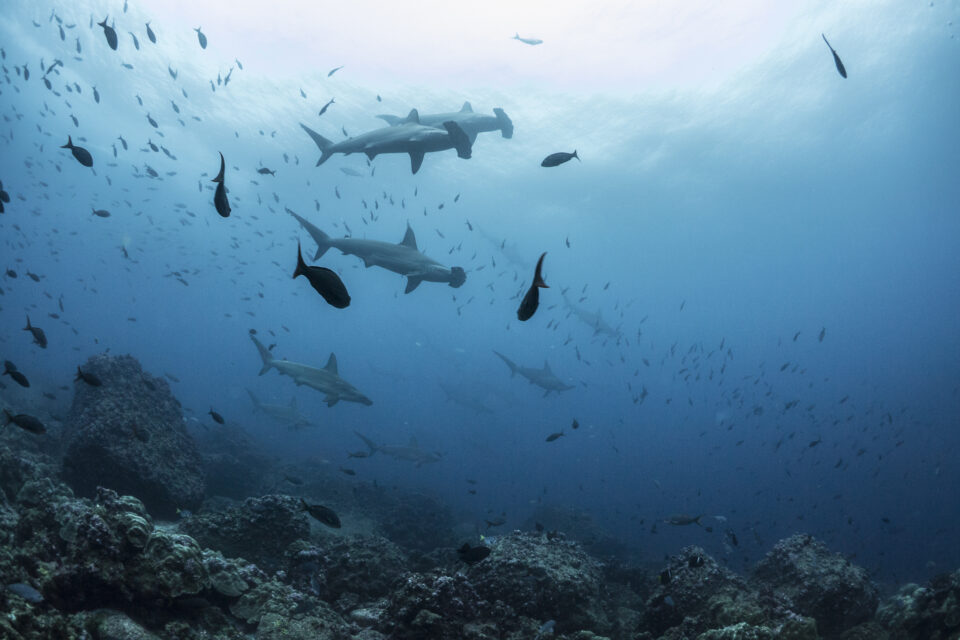
Galapagos marine reserve expansion brings hope - but new management challenges
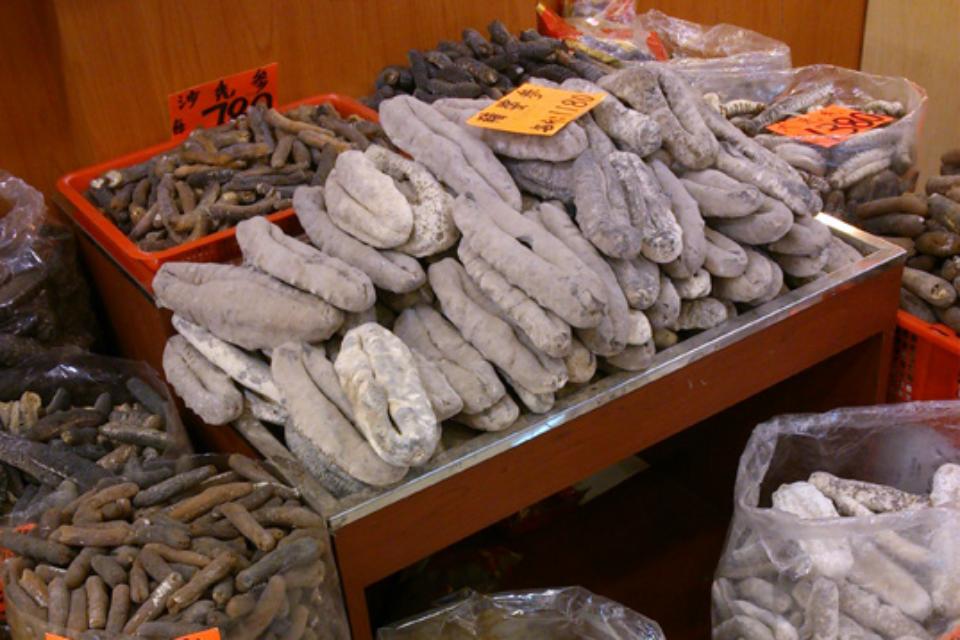
Global relevance: COVID-19 and sea cucumbers
